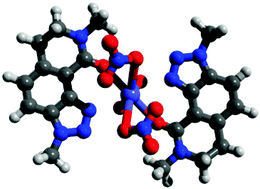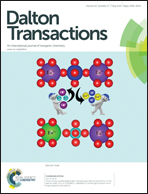Theoretical prediction of Am(iii)/Eu(iii) selectivity to aid the design of actinide-lanthanide separation agents†
Abstract
Selective extraction of minor actinides from lanthanides is a critical step in the reduction of radiotoxicity of spent nuclear fuels. However, the design of suitable ligands for separating chemically similar 4f- and 5f-block trivalent metal ions poses a significant challenge. First-principles calculations should play an important role in the design of new separation agents, but their ability to predict metal ion selectivity has not been systematically evaluated. In this work, we examine the ability of several density functional theory methods to predict selectivity of Am(III) and Eu(III) with oxygen, mixed oxygen–nitrogen, and sulfur donor ligands. The results establish a computational method capable of predicting the correct order of selectivities obtained from liquid–liquid extraction and aqueous phase complexation studies. To allow reasonably accurate predictions, it was critical to employ sufficiently flexible basis sets and provide proper account of solvation effects. The approach is utilized to estimate the selectivity of novel amide-functionalized diazine and 1,2,3-triazole ligands.


 Please wait while we load your content...
Please wait while we load your content...